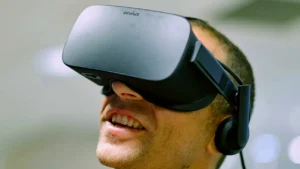
Exploring Variational Quantum Algorithms: Bridging the Gap Between Quantum Theory and Practical Applications
Quantum computing has emerged as one of the most exciting fields in modern technology, promising to revolutionize various industries by solving problems that are intractable for classical computers. At the forefront of this quantum revolution are variational quantum algorithms (VQAs), which offer a practical approach to harnessing the power of quantum systems even with current hardware limitations. In this blog post, we’ll delve into what variational quantum algorithms are, how they work, and their potential impact on the future of computing.
What Are Variational Quantum Algorithms?
Variational Quantum Algorithms are a class of quantum algorithms designed to find approximate solutions to complex problems by leveraging quantum computing. Unlike traditional quantum algorithms that require a fully error-corrected, fault-tolerant quantum computer, VQAs are tailored for near-term quantum devices, often referred to as Noisy Intermediate-Scale Quantum (NISQ) computers.
The fundamental idea behind VQAs is to use a quantum computer to explore a large space of possible solutions and then optimize this exploration to find the best result. This process involves a combination of quantum and classical computations, where a quantum processor evaluates a cost function and a classical optimizer adjusts parameters to minimize this cost.
How Do Variational Quantum Algorithms Work?
- Parameterized Quantum Circuits: At the heart of VQAs are parameterized quantum circuits, which are quantum circuits with adjustable parameters. These parameters are updated iteratively based on the results of the quantum measurements. The circuit is designed to encode the problem’s solution space in a way that the quantum computer can efficiently explore.
- Cost Function: The algorithm uses a cost function or objective function, which quantifies how close a given set of parameters is to solving the problem. In practice, this function is often derived from the problem’s Hamiltonian (a mathematical representation of the system’s total energy).
- Measurement and Feedback: The quantum circuit is executed on a quantum computer, and measurements are taken to estimate the value of the cost function. This information is then fed back to the classical optimizer, which adjusts the parameters of the quantum circuit to reduce the cost function.
- Optimization Loop: The process of running the quantum circuit, measuring the results, and updating the parameters continues in an iterative loop. The goal is to find the set of parameters that minimizes the cost function, thereby providing an approximate solution to the problem.
Applications of Variational Quantum Algorithms
Variational quantum algorithms have shown promise in a variety of applications:
- Quantum Chemistry: VQAs are used to simulate molecular systems and chemical reactions, providing insights into the properties of materials and molecules. This has implications for drug discovery, materials science, and environmental science.
- Optimization Problems: Many real-world problems involve finding the best solution from a large set of possible options, such as supply chain management, financial portfolio optimization, and logistics. VQAs can be employed to tackle these complex optimization problems more efficiently than classical algorithms.
- Machine Learning: Quantum-enhanced machine learning algorithms, including VQAs, can potentially improve pattern recognition, classification, and data analysis tasks by leveraging quantum parallelism.
- Quantum Approximate Optimization Algorithm (QAOA): One of the most well-known VQAs, QAOA is specifically designed to solve combinatorial optimization problems, such as finding the optimal configuration of a network or scheduling tasks.
Challenges and Future Directions
Despite their potential, variational quantum algorithms face several challenges:
- Noisy Hardware: NISQ devices are prone to errors and noise, which can affect the accuracy of the results. Advances in error mitigation techniques and improved quantum hardware are crucial for overcoming these issues.
- Scalability: The current quantum devices have limited qubits, which constrains the complexity of the problems that can be tackled. Researchers are working on ways to scale up quantum circuits and improve the efficiency of VQAs.
- Classical Optimization: The success of VQAs relies heavily on classical optimization algorithms, which can be computationally intensive. Developing more efficient optimization techniques is a key area of research.
- Algorithmic Development: There is ongoing work to refine and develop new VQAs tailored to specific problem domains, which will enhance their applicability and performance.
Conclusion
Variational Quantum Algorithms represent a promising bridge between theoretical quantum computing and practical, near-term applications. By combining quantum and classical resources, VQAs offer a pathway to solving complex problems that are currently beyond the reach of classical computers. As quantum hardware improves and new algorithms are developed, VQAs are poised to play a crucial role in advancing fields ranging from chemistry to optimization and machine learning.
The future of quantum computing is an exciting frontier, and variational quantum algorithms are helping to pave the way for a new era of computational possibilities. Whether you’re a researcher, developer, or just a quantum enthusiast, keeping an eye on the progress of VQAs will be essential to understanding how quantum technology will shape our world in the coming years.
Stay tuned for more updates on the fascinating world of quantum computing!
Feel free to leave any questions or comments below. I’d love to hear your thoughts on how VQAs could impact your field or any particular aspects of quantum computing you’re curious about!










